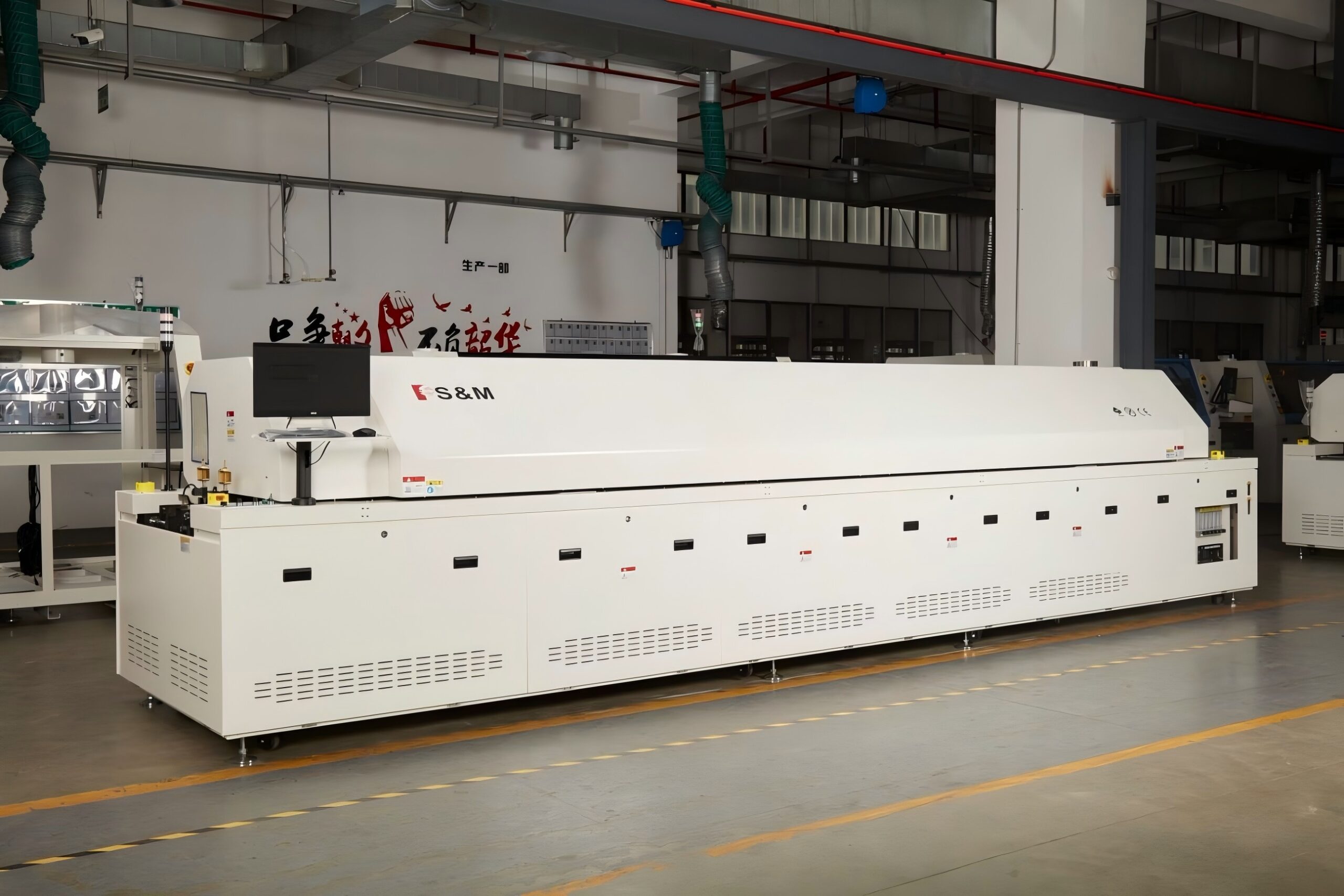
Introduction
Reflow soldering is one of the key processes in surface mount technology (SMT) production. Its main function is to heat and melt the surface mount components pre-pasted on the PCB (printed circuit board) through the solder paste to achieve an electrical connection. The whole process involves temporarily fixing the electronic components on the PCB through the solder paste, heating it to melt the solder, and finally forming a permanent solder connection.
Nitrogen Reflow Oven
Welding environment: Nitrogen (N₂) is injected into a closed environment to reduce the oxygen content (usually controlled below 100ppm) to form an inert gas environment.
Welding quality:
- Reduce oxidation, and make the solder joint surface brighter and smoother.
- Improve soldering wettability, and reduce defects such as cold solder joints and bridging.
- Particularly suitable for soldering of high-density, fine-pitch components (such as BGA, QFN).
Process cost:
- Nitrogen supply equipment (such as a nitrogen generator or liquid nitrogen tank) is required, which increases equipment cost and operating costs.
- Nitrogen consumption is large and the long-term use cost is high.
Applicable scenarios:
- Electronic products with high-reliability requirements (such as automotive electronics, aerospace, and medical equipment).
- Welding of high-density, fine-pitch components (such as BGA, CSP, and QFN).
- Lead-free soldering process (lead-free solder has a higher tendency to oxidize, and a nitrogen environment can improve soldering quality).
Equipment complexity:
- The equipment needs to be sealed and equipped with nitrogen injection and oxygen concentration monitoring systems.
- Operation and maintenance are more complicated, and regular checks of nitrogen supply and oxygen concentration are required.
Air Reflow Oven
Soldering environment: Air reflow: Soldering is performed directly in the air with a normal oxygen content (about 21%).
Welding quality:
- The solder joint surface may be oxidized and darker in color.
- The soldering wettability is poor and soldering defects are prone to occur.
- Suitable for soldering of ordinary components and low-density PCBs.
Process cost:
- No additional gas supply is required, and the equipment cost and operating costs are low.
- Suitable for scenarios with limited budget or low requirements on welding quality.
Applicable scenarios:
- Ordinary consumer electronic products (such as home appliances, toys, and ordinary PCBs).
- Welding of low-density, large-pitch components.
- Lead soldering process (lead solder has strong anti-oxidation ability).
Equipment complexity:
- The equipment structure is simple and does not require an additional gas system.
- It is relatively easy to operate and maintain.
Summary
The main differences between nitrogen reflow and air reflow are the welding environment, quality, cost, and applicable scenarios. Nitrogen reflow is suitable for welding high-reliability and high-density components, but the cost is higher; air reflow is suitable for general applications and has a lower cost. Which method to choose SMT depends on your specific product requirements and budget.
